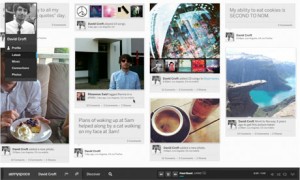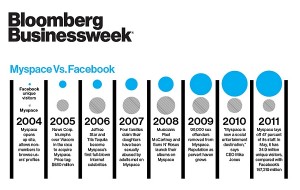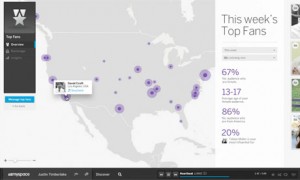Once considered the biggest social media site in the world, Myspace is trying to claw its way back into the big leagues with endorsements from co-owner Justin Timberlake. Myspace released a teaser video in September to re-brand itself as a relevant online platform for artists. The site has been described as a “mash-up” between Pinterest, Instagram and Facebook with a focus on music.
This post will analyze both the NewMyspace and explore its history to ensure it does not repeat its mistakes.
Myspace’s lifecycle:
Unfortunately Myspace has followed the traditional boy-band life cycle.
Stage 1: Humble beginnings: Myspace was founded in 2003 by Chris DeWolfe and Tom Anderson, originally designed as a file storage site and it quickly became one of the most trafficked sites on the internet.
Stage 2: Stardom: Myspace was sold to Rupert Murdoch’s News Corp in 2005 for $580 million, their first major internet purchase. In 2006, Myspace’s 100 millionth account was created and the site surpassed Google as the most visited website in the US. In 2008, Myspace generated $800 million in revenues and was valued at $12 billion. However, for a variety of reasons Myspace’s popularity started to erode.
Stage 3: Fall and struggle: In 2008 Myspace lost 10 million users between January and February 2011 and Facebook overtoook Myspace in the Alexa.com rankings.
Reasons for decline
- Failed to “grow-up” and evolve: Myspace failed to innovate and stuck to a “portal strategy” of building an audience around entertainment and music.
- Not user-centered: Myspace had an advertising deal with Google, which meant it was required to tons of ads on its heavily advertised space. This made the site slow, difficult to use, and less flexible.
- Open vs. closed platforms: Myspace built everything in-house, whereas rival sites like Facebook created platforms that allowed outside developers to build new applications.
- Buggy products: Myspace introduced a lot of features but many were poor quality and launched before they were sufficiently tested.
- Free speech: Myspace was being investigated for allowing children’s exposure to pornography. This bad press caused new social media sites like Twitter and Facebook to target Myspace users.
Stage 4: Low point: In 2011 Myspace was put up for sale (estimated to be worth $50–200 million), however they were unable to find a buyer for more than $100 million. In June 2011, Myspace was acquired by Specific Media for $35 million.
Stage 5: Revival: Myspace is still operational. According to comScore, Myspace has 54 million users and employs 200 people (down from the 1,600 employees in June 2009). Alexa.com ranks Myspace’s global rank as 196 (November 2012).
The NewMyspace:
The teaser video highlights the user and artist experience of the new site.
User experience: The teaser follows the user experience of “David Croft”, as he clicks through a variety of features including mixes (playlists), connections (friends), and trending (background information on bands such as media interviews, magazine articles and profiles). Each page is almost all photos and seamlessly integrates together.
Artist experience: From an artist perspective, the site is designed to give them information about who is listening to their music and where they are. CEO Vanderhook argues it is “a social network for the creative community to connect to their fans.”
A message on the website announced the redesign: “We’re hard at work building the new MySpace, entirely from scratch.”
To ensure the New Myspace it is a success they should take the following lessons from their past:
- Continue to innovate adding features.
- Make sure new features undergo rigorous user testing.
- Use open platforms as much as possible so you don’t have to shoulder all of the work.
- Focus on the user experience.
If Myspace follows these tips and is ready to learn from their mistakes, hopefully it will be able to follow in Justin Timberlake’s foot steps and regain its position as a leading social media site.



